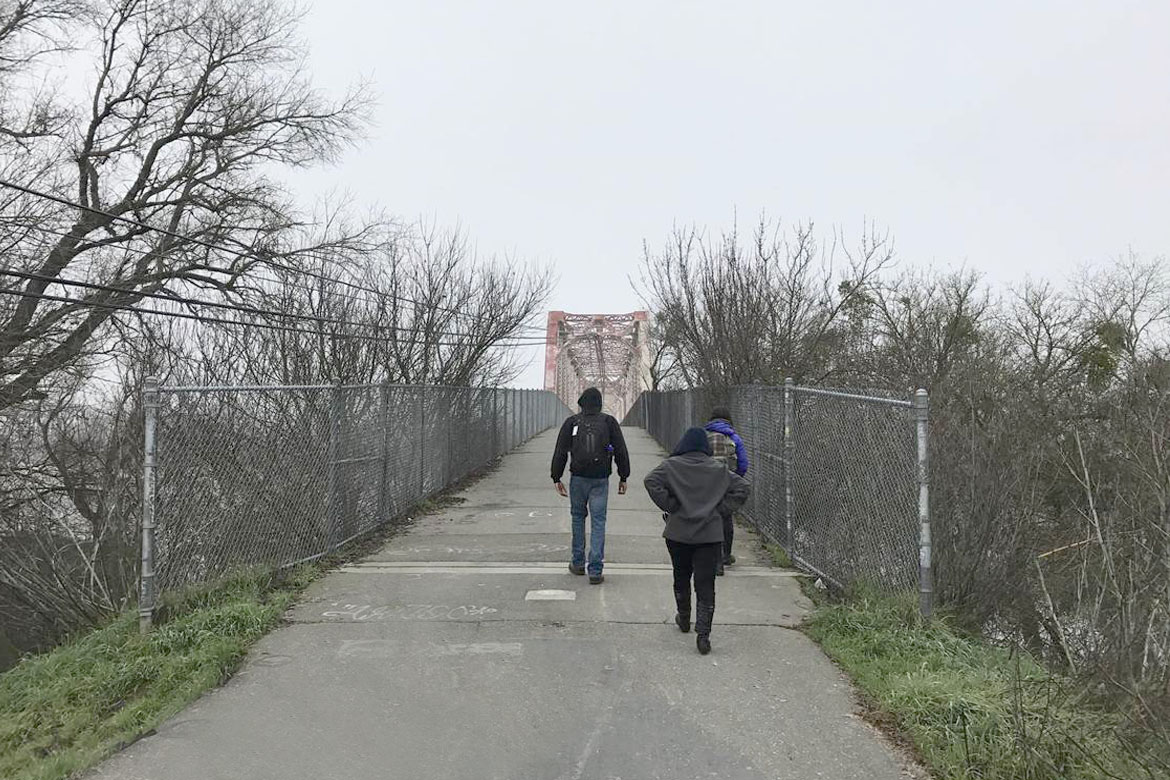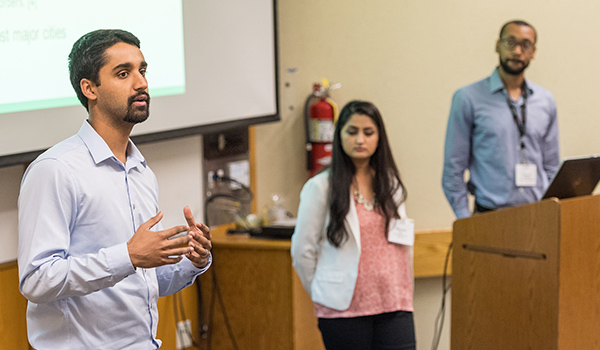Population health and the social determinants of health—concepts that emphasize taking environmental factors into account when treating a patient—are gaining steam in medical education. The same environmental factors that many physicians are now focused on addressing, however, prevent some of the sickest patient populations from accessing care.
Seven percent of Americans will be homeless at some point in their lives, according to the National Alliance to End Homelessness. A clinical track at the University of California, Davis, School of Medicine that emphasizes care in underserved urban communities is working to bridge this gap in health care for homeless people by bringing the clinic to them.
Working with faculty members and community medical professionals who specialize in caring for homeless patients, a small group of UC Davis students collaborated with Street Medicine Sacramento in 2016-17. From a student perspective, working with the program allows students to take broader health systems science theories being taught in medical school and apply them by treating homeless patients in need of care.
Keyon Mitchell, Asadullah Awan and Nazeela Awan, a trio of fourth-year medical students at UC Davis, detailed their efforts during a presentation entitled “Sacramento Street Medicine: An Integration into Medical Curriculum,” during the Accelerating Change in Medical Education Student-Led Conference on Leadership at the University of Michigan in early August.
“It’s one thing to be in a classroom and to talk about it [homelessness] and read about it,” Mitchell said. “It’s a unique perspective to actually be able to see it. Often, some of the barriers and some of the social determinants of health are not as accurate as you think when you go into the community.”
Integrating street medicine in the curriculum
UC Davis’ involvement in street medicine took hold after several medical students attended a presentation by Jim Withers, MD, considered one of the founders of the street medicine movement. Shortly thereafter, the students paired with local street nurse Tim Fallis, who founded Street Medicine Sacramento in 2015 and had familiarity with the landscape in the homeless community.
For the student-run outreach project to become a reality, the faculty had to be on board.
“We wanted to do this project and we were trying to figure out how to get our training with the regular curriculum in and integrate a new piece of curriculum into our fourth year [medical school curriculum],” Mitchell said. “It required a lot of talking to faculty and having them be open to this idea. They were helpful and supportive. They saw it as an interesting opportunity to go out in the community and do this work.”
Once the infrastructure was developed, the students began to go on weekly “rounds” with Amanda Buccina, one of the Street Medicine nurses. During these outings, Buccina and groups of two to three students would visit areas of Sacramento with large homeless populations and provide patient care and outreach. Students provided primary, secondary and tertiary medical care, both directly and through referrals.
The students involved in the street medicine project hope to expand its reach within the UC Davis Medical School, which is a member of the Accelerating Change in Medical Education Consortium. The value of learning from the most vulnerable patients, rather than learning about them, cannot be understated, Mitchell said.
“In the clinical setting, patients come to you,” Mitchell said. “It’s your comfortable space. But when you’re going out there, taking yourself into their space, it is a unique experience. You learn a lot that way. You aren’t in your safe space or your comfort zone.”
The UC Davis students’ presentation was among dozens of presentations and speeches that took place during the student-led conference. Co-hosted by the University of Michigan Medical School and the AMA, the theme of the conference was “learn, connect, empower, impact.”
- Teaching the leadership skills tomorrow’s physicians will need
- Video game developer says med ed should go outside the box





